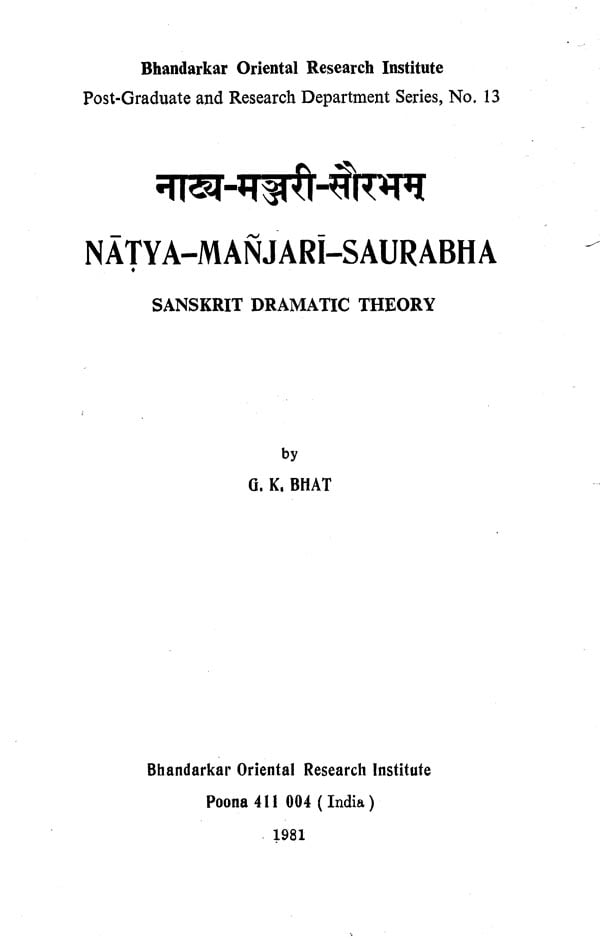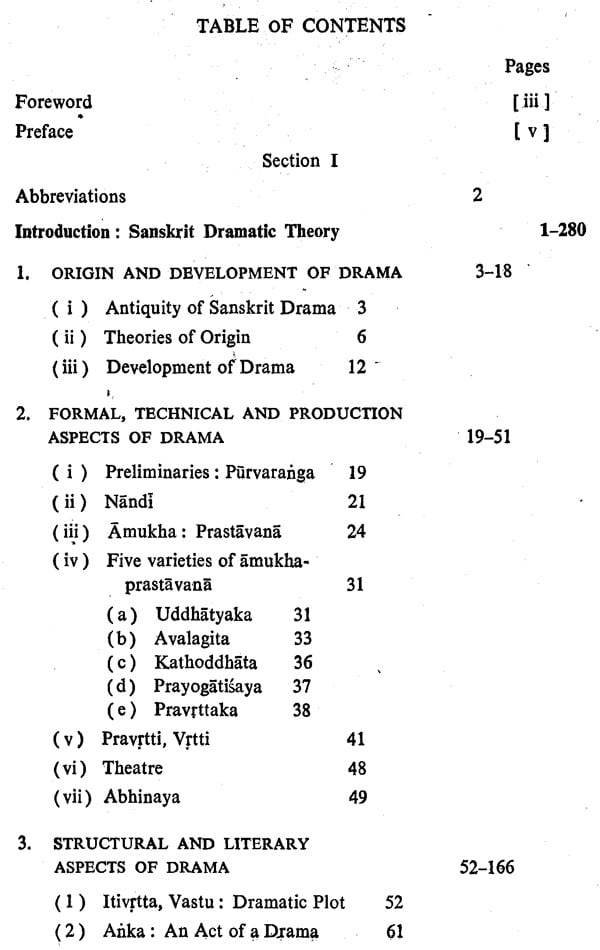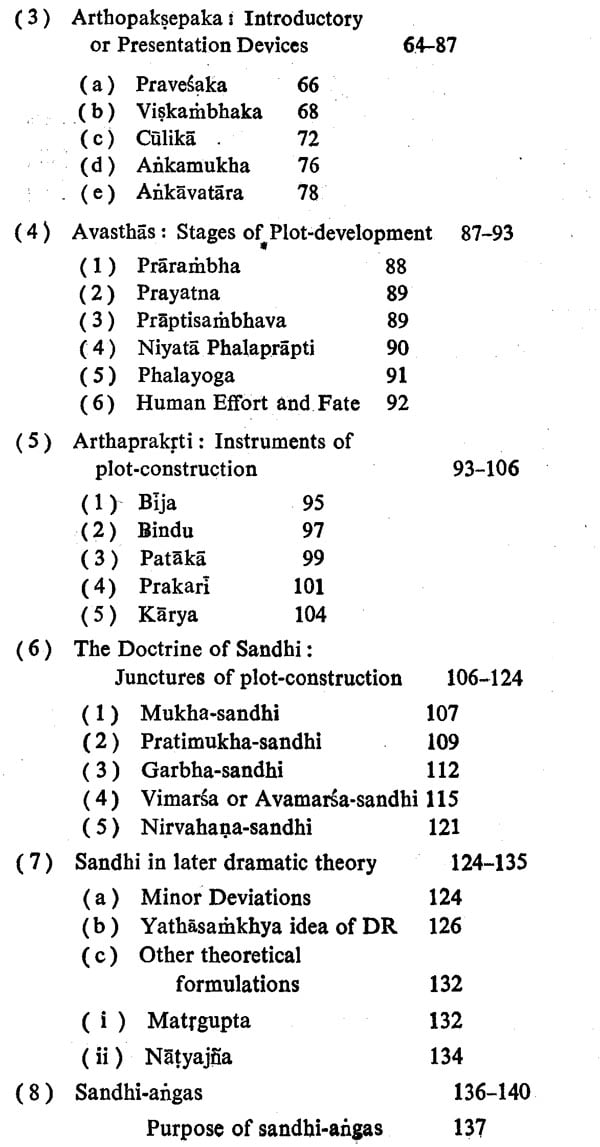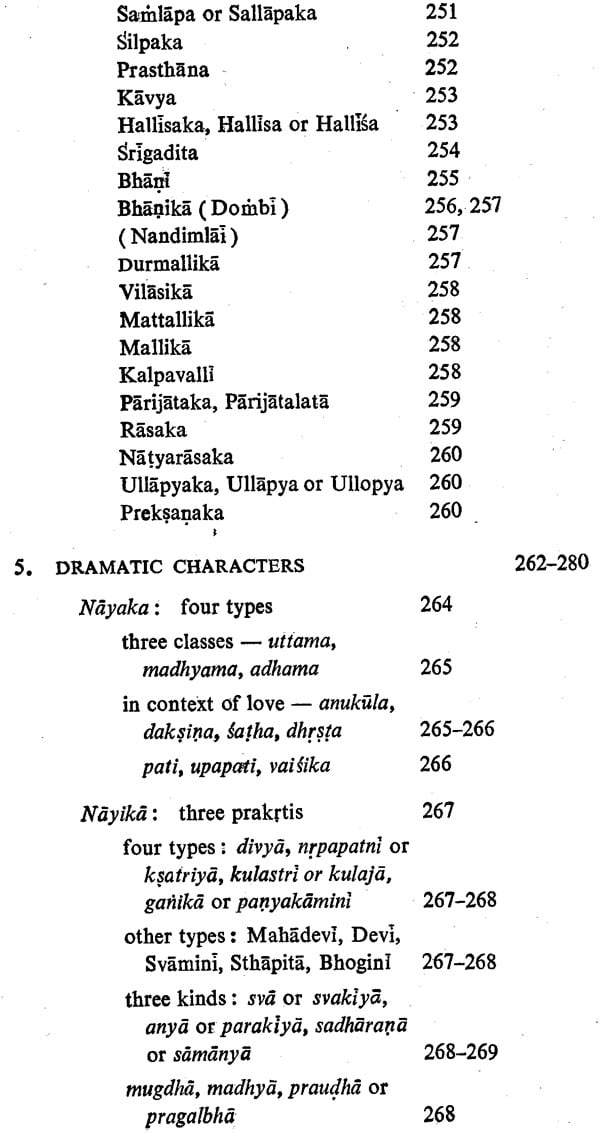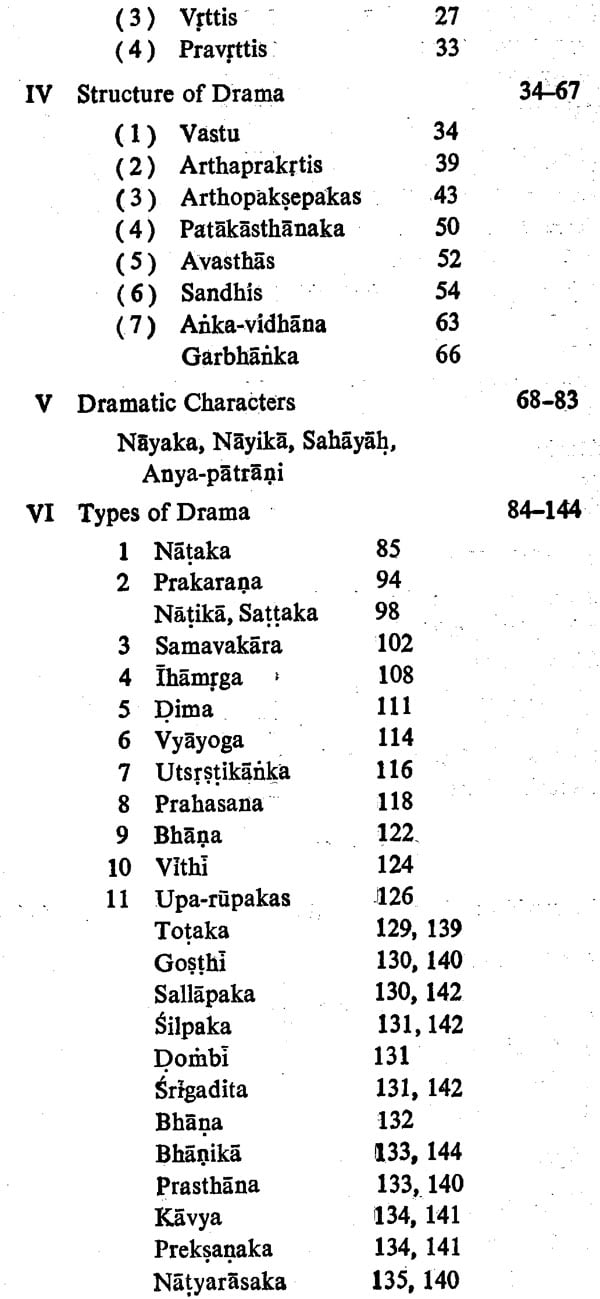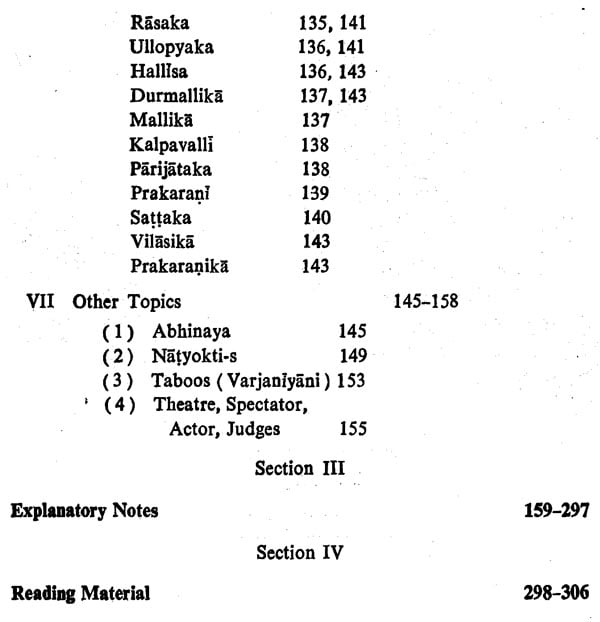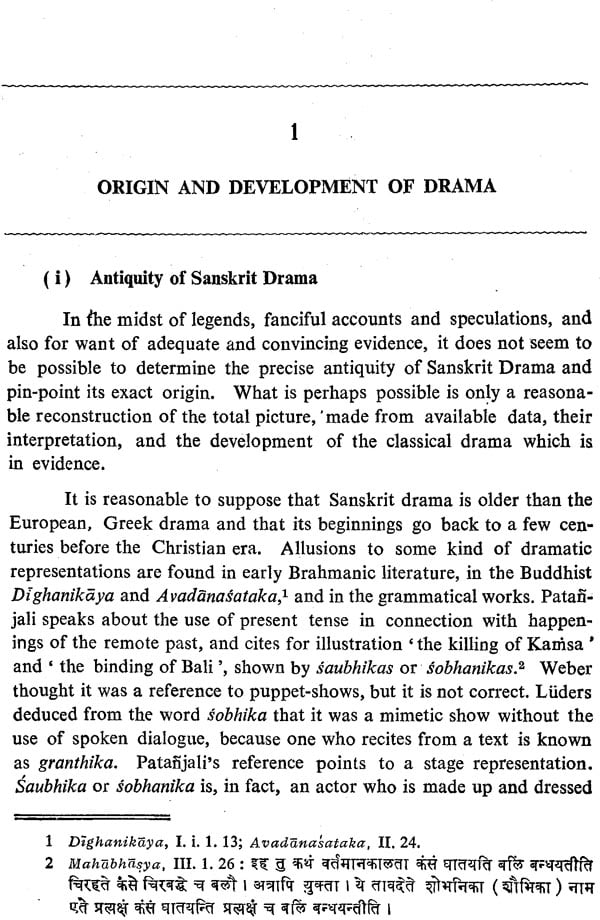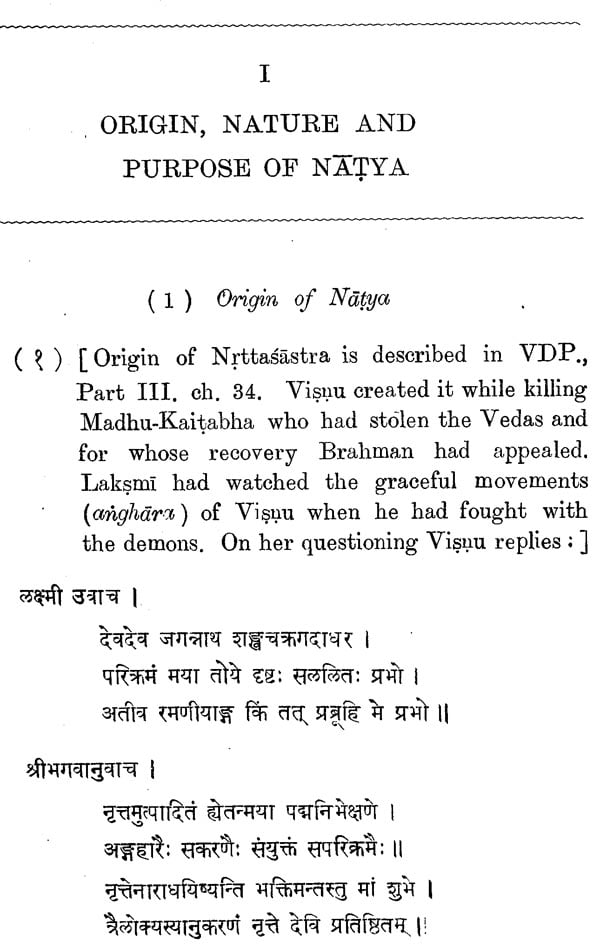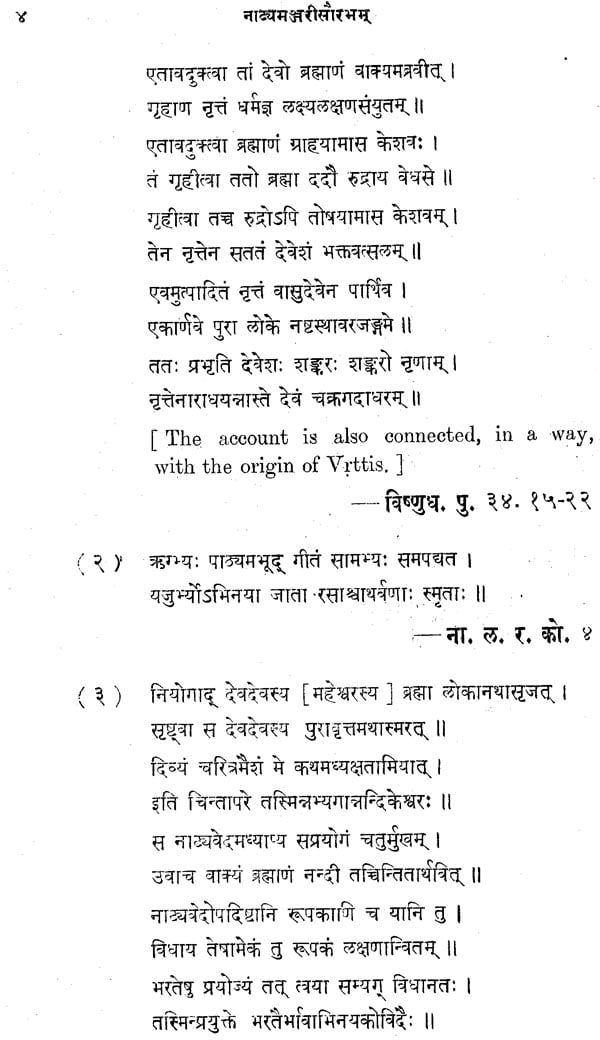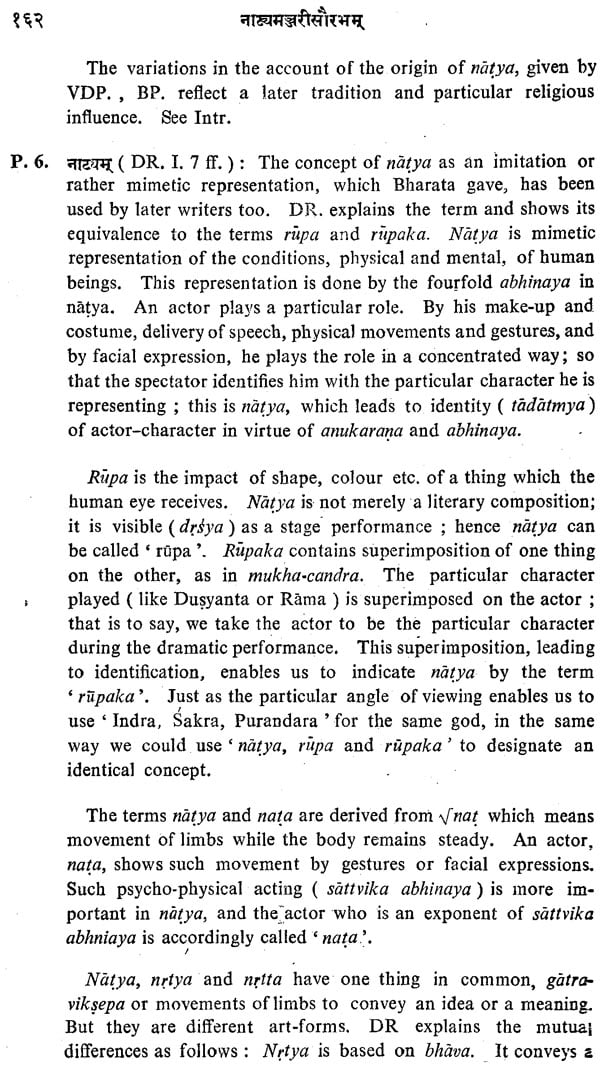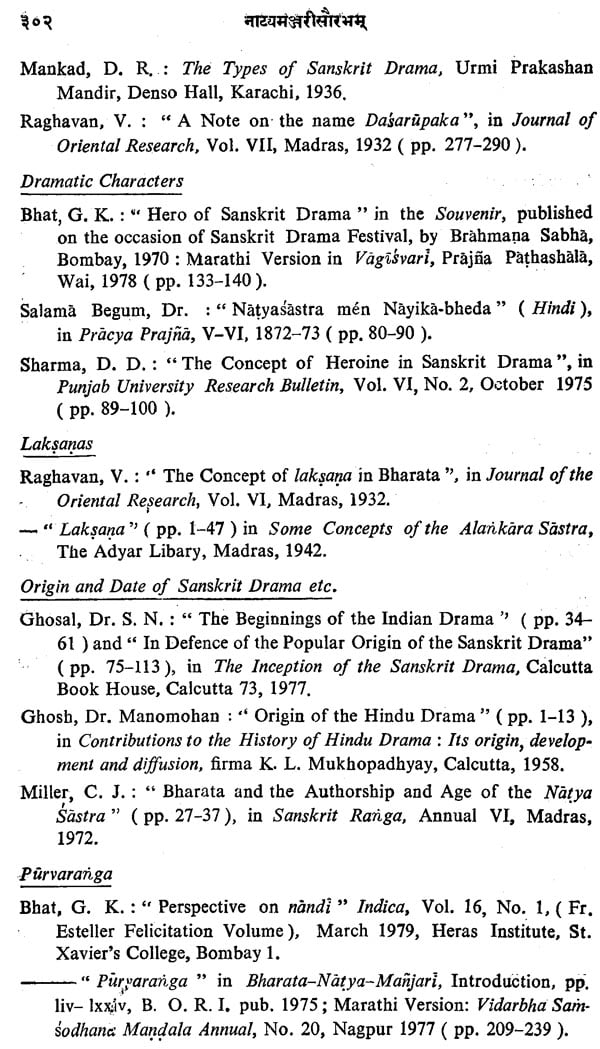
नाटय-मञ्जरी-सौरभम: Natya-Manjari-Saurabha: Sanskrit Dramatic Theory (Pin Holed)
Book Specification
| Item Code: | NAU128 |
| Author: | G.K. Bhat |
| Publisher: | Bhandarkar Oriental Research Institute, Pune |
| Language: | SANSKRIT AND ENGLISH |
| Edition: | 1981 |
| Pages: | 602 |
| Cover: | HARDCOVER |
| Other Details | 10.00 X 7.00 inch |
| Weight | 900 gm |
Book Description
Professor G. K. BHAT initiated this research-project on Sanskrit Natyasatra while he had been working at the Institute as Curator and Director of the Post-Graduate and Research Department. The first volume in the project, the Bharata-Mitya-Manjari, was published in 1975, and I am glad to be able to report that it has been received with appreciative enthusiasm by all those for whom it was primarily intended. I was personally keen on seeing that the second volume also was published during Professor BHAT's tenure of Directorship. Indeed, we had duly announced it as one of the prospective Diamond Jubilee publications. But what with one thing and another, its publication has been delayed till now. I am, however, not sure whether this inevitable delay has not conduced to the present volume becoming more comprehensive and substantial.
I take this opportunity of expressing on behalf of the Institute my sincere thanks to Professor BHAT for this highly laudable piece of work. Professor BHAT has formally retired from the service of the Institute, but I hope and trust that his academic association with the Institute will by no means cease on that account.
The material in this Volume is presented topic-wise and the select passages are then arranged in chronological sequence. A reader wanting information on a particular topic, say, artha-prakrtis, nayaka-nayika, or a dramatic pattern like prakarana or prahasana, will find it here in one place, drawn from all important dramaturgical texts and arranged in chronological order. An additional advantage will be the facility thus afforded to study the deviations from or modifications or amplifications of the original concepts of Bharata and to judge the progress of dramatic literature and of theoretical ideas.
The texts included in this volume have already been published, most of them with English or Hindi translation and notes or commentaries. Some like the Dajaripaka or the Sahityaclarpana are included in the University courses of study. I have, therefore, refrained from translating the Sanskrit material. Instead, I have given detailed notes to explain the concepts and ideas, occasionally translating difficult phrases or lines from the texts, and also correcting, at places, some print-errors in the Sanskrit text that mattered. It is hoped that these notes will greatly assist in the understanding of the Sanskrit text passages.
The introduction, a book in itself, deals with all the topics of Sanskrit dramatic theory. I have endeavored to present a comparative and comprehensive study here. What Bharata really meant by a particular theoretical concept will be found here; to what extent the later theorists follow Bharata correctly or differ from him, modify, elaborate, or alter the theoretical concepts, is also recorded; and the deviations or alterations, where they are found, are critically examined too, with a view to arriving at the correct theoretical notion. Surprisingly I found that the Dagarspaka had misinterpreted Baraga’s concept of sandhi in dramatic plot-construction; and the misconception has persisted down the passage of time. The Sithityadarparza too is not free from errors. I have tried to put all the theories and doctrines in their proper perspective and with accurate content. I have made full use of Abhinavagupta's commentary on the Natyasastra, quoting amply from him and paraphrasing him in the course of my explanations. I have, in addition, provided many charts and tables, in the notes and in the introduction, anal a sketch explaining the inter-relations among abashes, artha-prakrtis, and sand his that enter in dramatic plot-construction. I have also prepared a chart to explain the distinctive characteristics of the ten patterns of dramatic composition. I sincerely hope that all this will contribute towards a better understanding and a correct appraisal of Sanskrit dramatic theory and literature.
The Reading Material at the end provides a comprehensive bibliography of texts, books, and articles on individual topics connected with dramaturgy.
I have been working on this Volume since 1976. In fact, the volume was intended to be published in 1978 on the occasion of the Bhandarkar Institute's Diamond Jubilee. But pressure on the Institute’s small press, the urgency of completing the printing of other works planned for the Diamond Jubilee, and the several. things to which I had to attend as the then Director, led unavoidably to keeping the book back. The Sanskrit text of the book and some notes, which were ready, were formally announced as a Diamond Jubilee publication on the occasion; the complete volume is now released.
I retired from the Bhandarkar Institute in June 1979. The Volume, however, is issued as the Institute's publication as originally planned. I am particularly grateful to the Institute's Honorary Secretary, Professor R. N. Dandekar, for allowing me to carry out the work, for encouraging me and for cordially insisting on my completing the undertaking, and for publishing it. I must also thank the librarian of the Institute for giving me all the books and journals I wanted and for letting me keep them with me till the completion of my writing. I am equally thankful to the staff of the Institute's "press for their devoted and painstaking work in bringing out this Volume in the honored tradition of the Institute.
Book's Contents and Sample Pages
